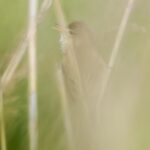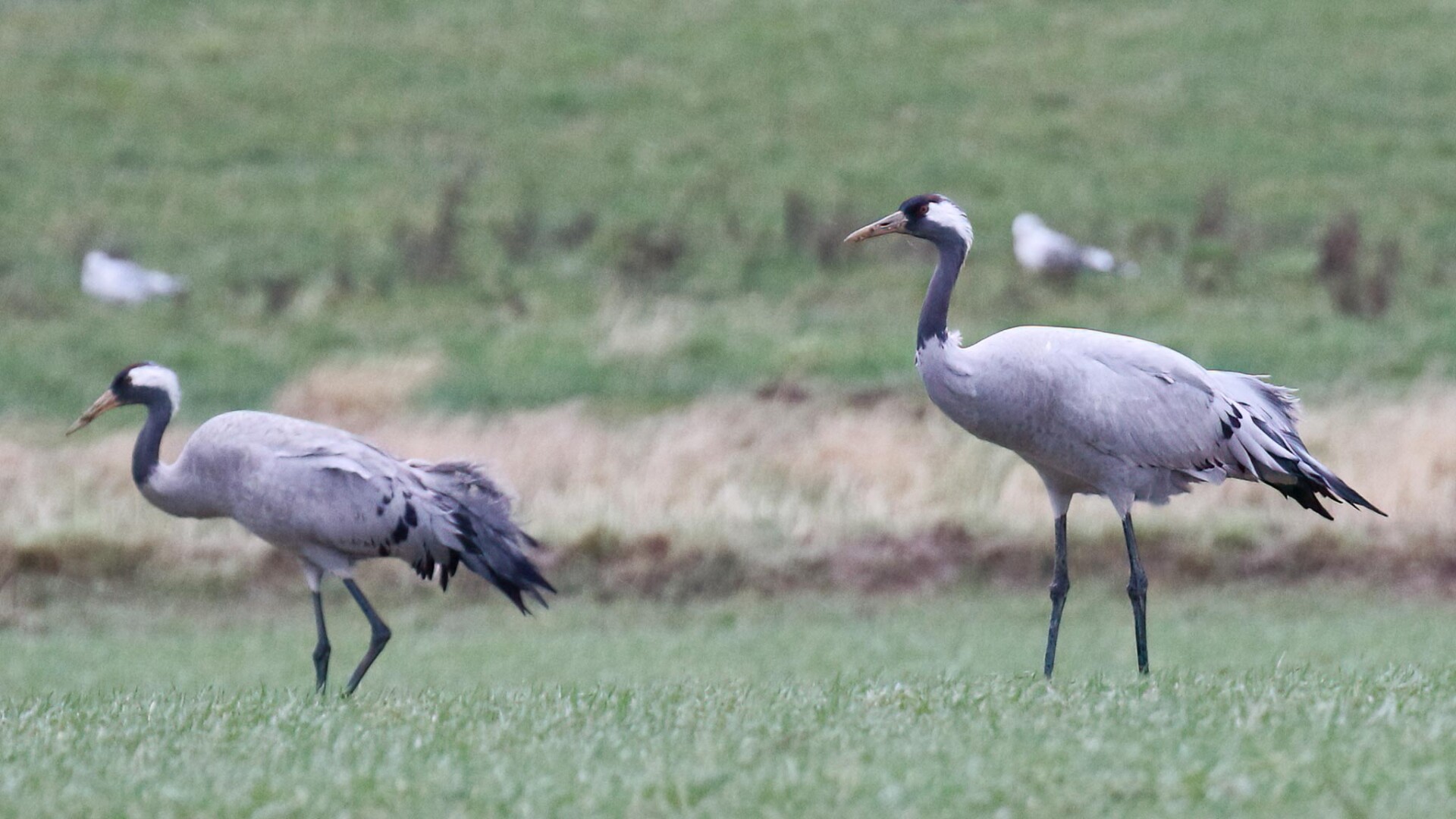A Private Tour today, in North Norfolk. It was a cloudy and grey day, with a blustery and cool northerly wind, but it stayed pretty much dry throughout and we enjoyed a good day out and saw a nice selection of different things.
With the wind still coming off the Continent, we decided to have a quick look in Wells Woods again first thing, to see if anything had arrived overnight. As we made our way in from the car park, we stopped to have a quick look at the boating lake. As usual, there were several Little Grebes and three Tufted Ducks out on the water. We heard a Kingfisher call, but couldn’t see it and then a minute or so later two Kingfishers appeared right at the back, chasing each other back and forth across the water, before disappearing back through the trees.
The birches were relatively sheltered from the wind, but despite this there was nothing much in here today – we could hear a couple of Coal Tits in the pines beyond. We continued in round the Dell, which was similarly quiet – we heard a couple of Chiffchaffs and one or two Jays screeching. It sounded like the tit flock was up in the top of the pines today. A Great Spotted Woodpecker called from somewhere deep in the trees. It was a bit more exposed in the open area south of the main track, which was pretty much devoid of birds on a quick circuit this morning. There clearly were not large numbers of freshly arrived migrants so we decided to move on.
Driving east along the coast road, we stopped next at Stiffkey. It was spitting very lightly with rain when we arrived, but a female Marsh Harrier was hunting the field right next to where we were parked so we watched it from inside the minibus. By the time it had drifted off north, the rain had stopped. Given the weather, it probably wasn’t a great surprise that we didn’t see many butterflies or dragonflies along the footpath today. We did have one Speckled Wood in the trees.
A Stock Dove flew over was we walked along the permissive path by the road and a Chiffchaff was calling in the copse at the end, but otherwise it was quiet along here (apart from the traffic!). A Common Buzzard was hanging in the air over the south end of the Fen when we got out of the trees on the other side of the road and through the first kissing gate, and a late House Martin was still around the house on the top of the hill. A little further along a Chiffchaff and a lemon-yellow Willow Warbler flitted out of the sallows by the river briefly.
The vegetation is now too tall to see across to the Fen from the path, but there is one area where you can just about see through the reeds. The Spoonbills were not in their usual place, on the grass at the south end, but had moved back to the high point of the island, in the corner by the reeds, out of view from the seawall. We found a gap in the reeds through which we could just about see them. There were a lot fewer than recent days too – only about twelve or so today, compared to 50+ previously.
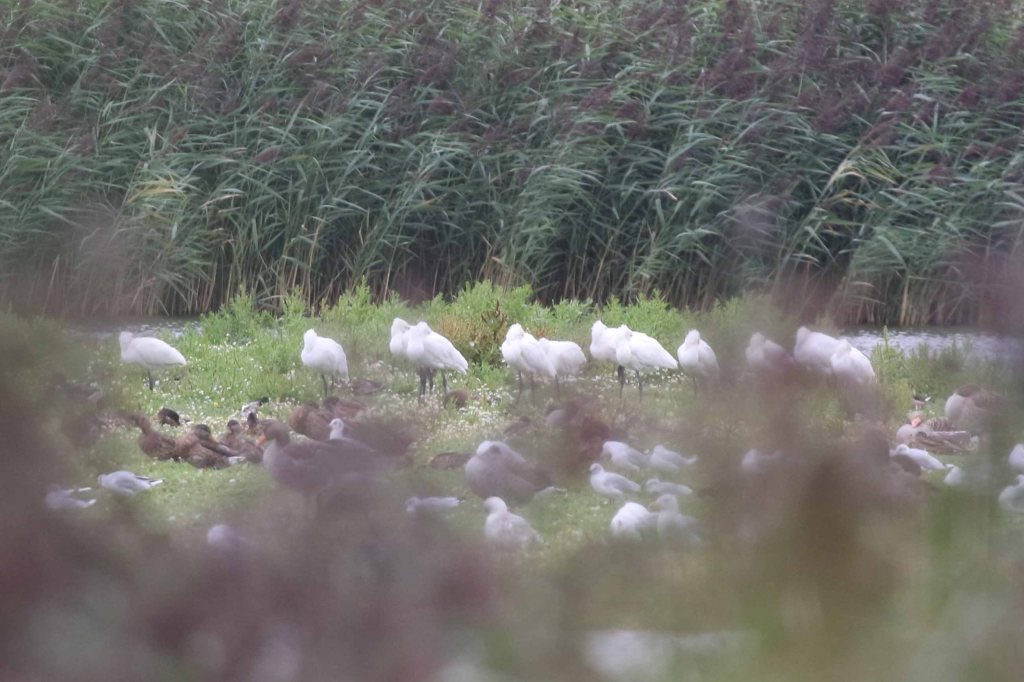
We could see a lot more water on the Fen even from here and hear that water was still being allowed to run on, through the sluice from the river. The water level had perhaps been getting a bit low but it is a bit early to flood it for the winter wildfowl, with lots of passage waders still to come through. The Spoonbills also usually utilise the site well into September.
We continued on and up onto the seawall, where we were out in the face of the wind. We could now see that the south end of the island was submerged and there was no exposed mud. All the birds were packed into the areas of grass which remained above the flood. There were lots of gulls and a few ducks, mainly Mallard and Teal, and Greylags.
The tide was high in the harbour, and many waders usually roost on the Fen over high tide. There were still lots of Black-tailed Godwits and Redshanks on here, but they were packed in tightly with the gulls and wildfowl. We counted at least 30 Greenshanks too, but they were now having to roost up to their bellies in water as there was no room anywhere else. One decided to see if it could find somewhere better and flew out over the seawall past us. We watched it fly up the harbour channel, checking out the edges, then out over the saltmarsh. It was a big tide today, higher than normal backed by the strong north wind, and there was nowhere for it to go, so it turned and flew back in to the Fen.
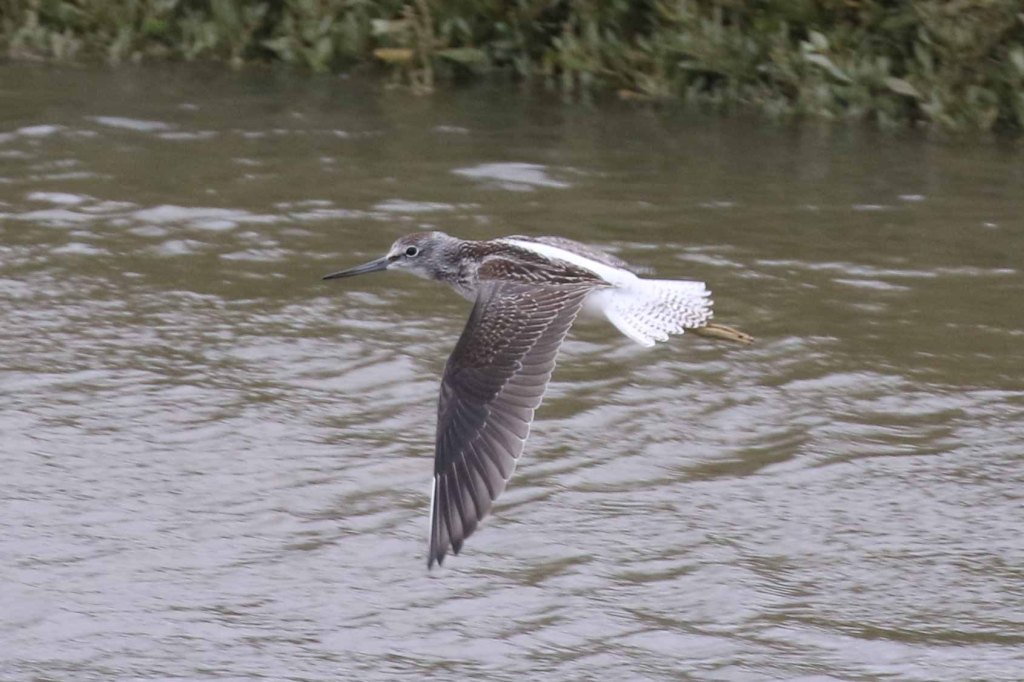
We had a quick look out at the harbour, but it was rather breezy. We could see lots of seals pulled out on the shingle on the end of Blakeney Point. With the very high tide, there were few birds out on the remaining areas of saltmarsh, just a Little Egret which came up from the vegetation briefly. We decided to head back.
Carrying on east, we stopped next at Cley. The vote was for an early lunch first, and we managed to make use of the picnic tables overlooking the reserve, despite the breeze. Afterwards, we headed out to the hides.
We went into Teal Hide first. The wind had pushed the water back and the waders were further over today. Most of the Black-tailed Godwits and Ruff were roosting in the shallows in the lee of the island. In amongst them, we could see three eclipse drake Wigeon, our first of the autumn. Someone kindly drew our attention to a Wood Sandpiper which had just appeared from behind the reeds. We watched it feeding in and out of the vegetation, presumably finding some shelter in there. At least five Meadow Pipits were feeding in the edge of the reeds in front of the hide too, presumably trying to find shelter from the wind.
When we looked up as a few Greylags flew in from over the reedbed at the back, we noticed a Common Crane dropping down over the scrape too. Not something you often expect to see when you look up from the window of the hide! The Crane turned into the wind right in front of the hide and gradually lost height as it dropped over the reedy ditch and disappeared down onto Simmond’s Scrape, next door.
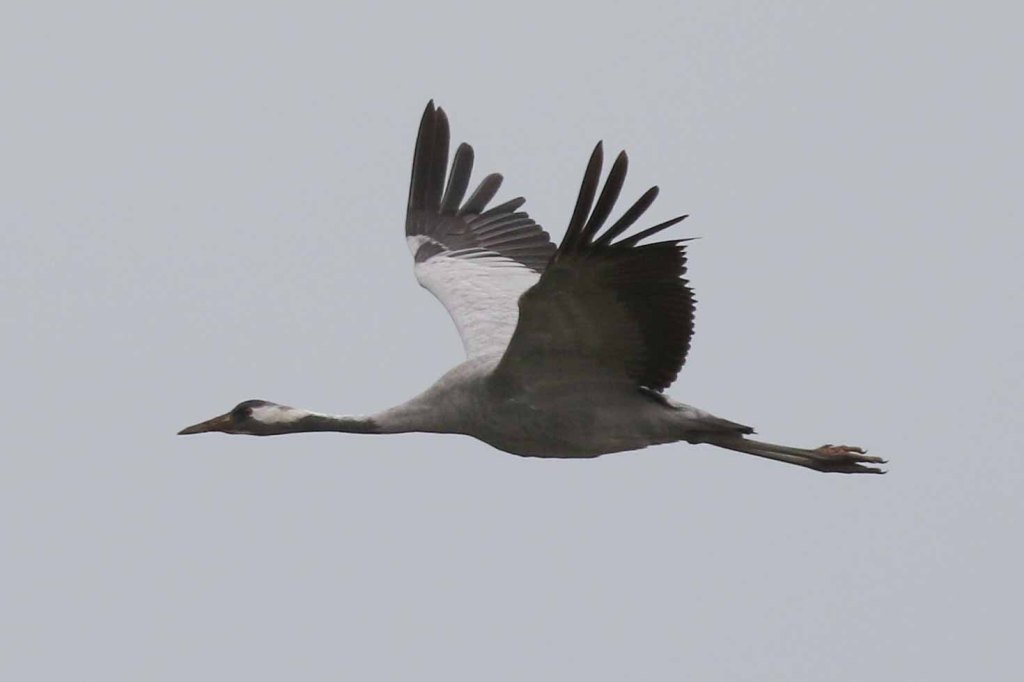
One of the locals came running round from Avocet Hide to tell us the Crane was on Simmond’s Scrape, so we went round there to see it. We had fill-the-frame views through the scope as it walked across the middle to the island – stunning! It stood for a while looking round, picking at the ground, then walked back across the scrape to the reeds on the far side, where it proceeded to look for food, dwarfing the Little Egrets which were back there too.
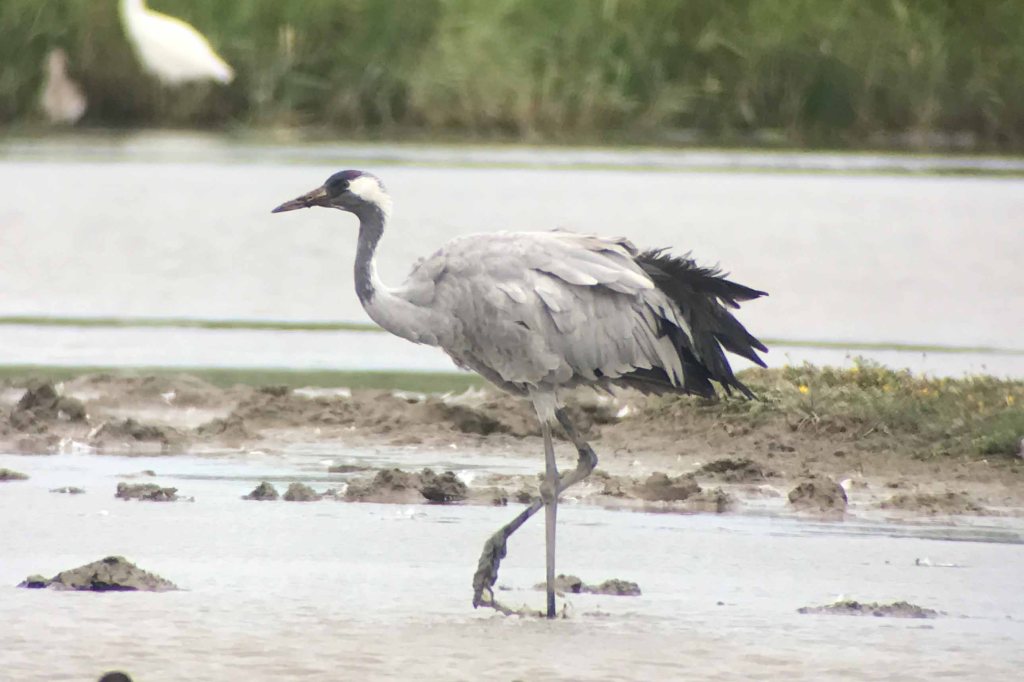
There were more waders on here. A mobile flock of Dunlin also held two juvenile Little Stints, which we got a good look at through the scope. We could see how small they were relative to the Dunlin, itself not a large wader. Two Ringed Plovers were out on the mud at the back and a couple of Green Sandpipers were feeding in the back corner, and kept flying round calling, while a third was on Whitwell Scrape. Two Common Snipe were hiding in the edge of the low cut reeds along the back edge. There were more Black-tailed Godwits on here, including a couple of smart rusty juveniles of the islandica subspecies, and a couple of Avocets.
From the hides, we walked back to the Visitor Centre. After a quick facilities break, we drove the short distance along the road to Walsey Hills. We were heading for the East Bank but as we passed Snipe’s Marsh we stopped to watch several Little Grebes out on the water. One adult was feeding two well grown but still stripy-headed juveniles – whenever the adult surfaced with a fish, either one or both juveniles would swim towards it calling, but interestingly one would turn and swim away if its more boisterous sibling was coming too. If its sibling was already busy with a fish, it would take the opportunity to be fed.
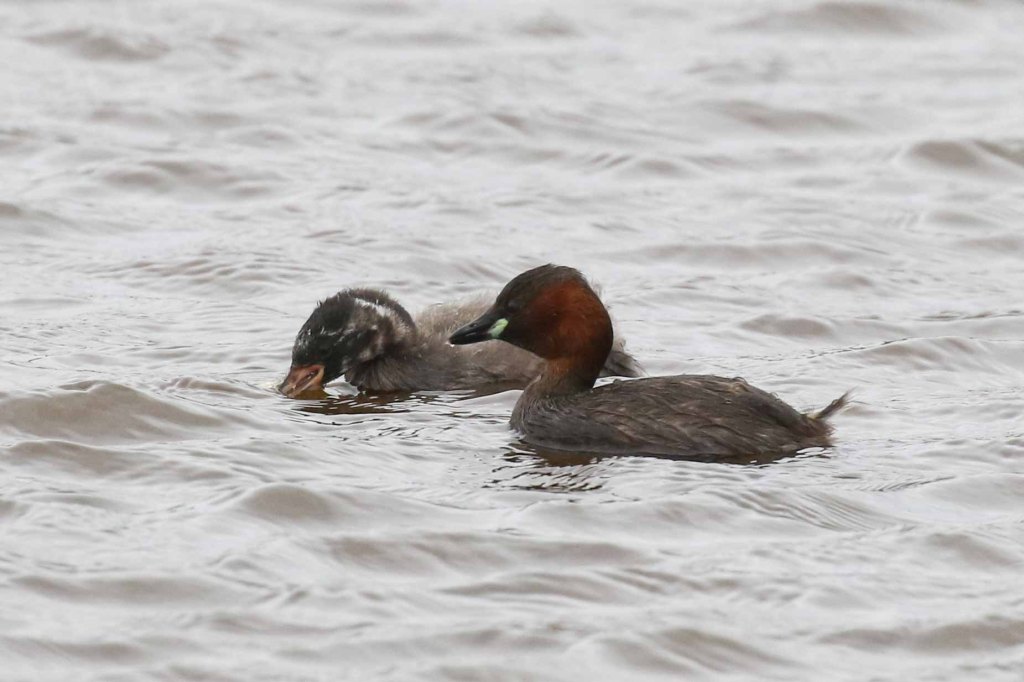
Crossing the road, we could see a couple of Mute Swans in the catchwater drain and as we got nearer we found a female Tufted Duck with a brood of three almost fully-grown ducklings in there too. From the start of the bank, we could see a female Gadwall on Don’s Pool with five also almost fully-grown ducklings of its own.
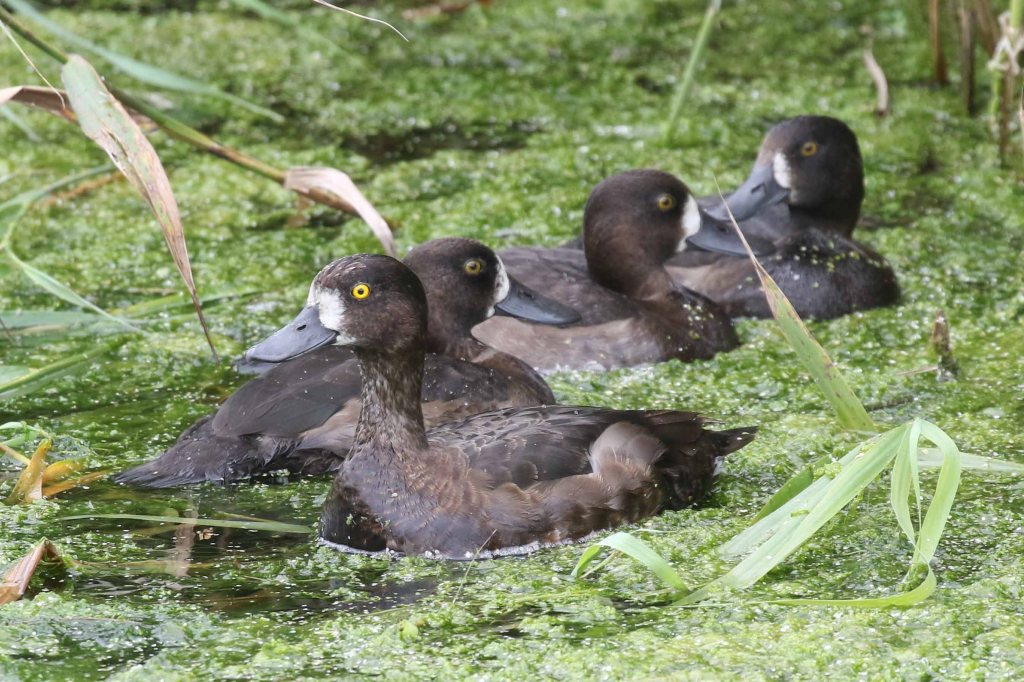
A couple of Curlew flew up out of the grass and scanning the grazing marshes we found there were actually more than fifty hiding in the vegetation, out of the wind. A Grey Heron was hiding in the long grass right at the back, in front of the reeds. While we were scanning, our attention was caught by a distant Little Gull on Pope’s Pool. We had a quick look at it from here just in case it should fly off before we got closer. A young Marsh Harrier drifted over from the reedbed and circled overhead.
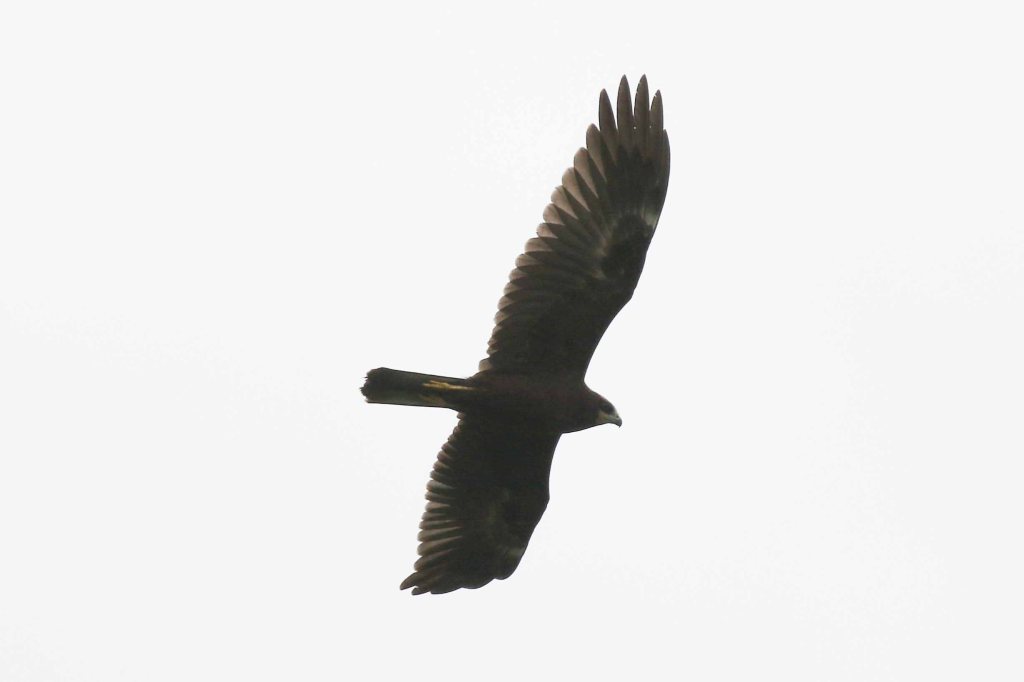
Continuing on up, we stopped to scan the Serpentine. There were more waders on here – lots of Black-tailed Godwits and several Common Snipe. More godwits kept flying in from the direction of the reserve and dropping down to join them. Along the north edge, we got the scope on a Common Sandpiper, and at one point had it together with two Green Sandpipers, a Common Snipe and a Curlew all together in the same view.
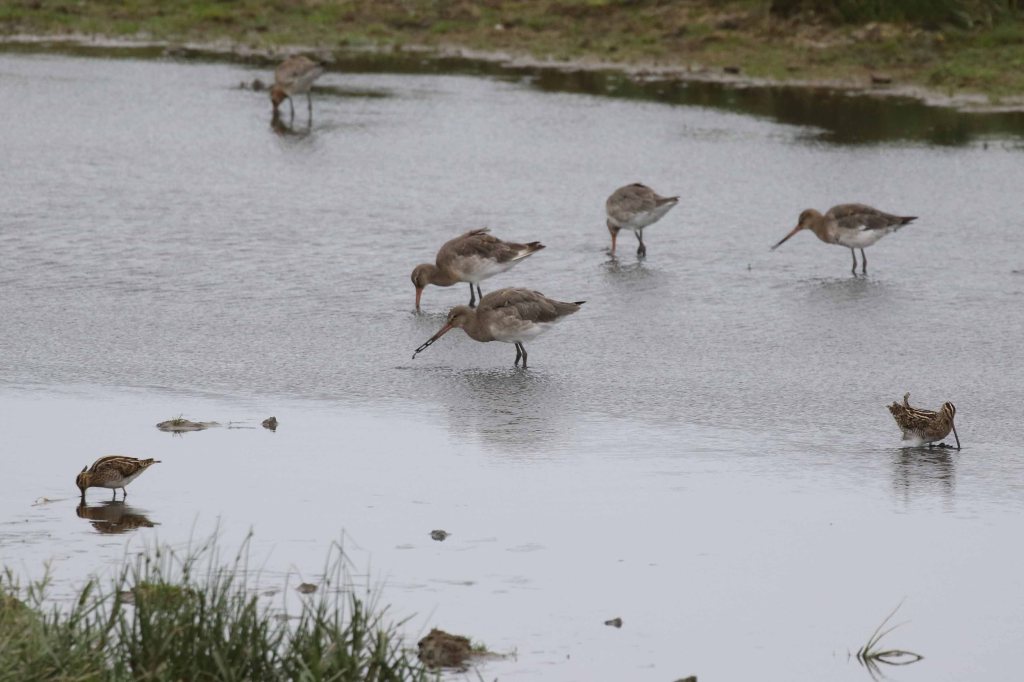
The Little Gull helpfully flew in from Pope’s Pool and landed on the Serpentine, much closer to us. It swam slowly towards a Black-headed Gull which was feeding on the edge of the mud. The Black-headed Gull chased the Little Gull off, but not before we had managed to get a good view of the size difference between the two.
It was windy up on the East Bank, so we headed for the shelter overlooking Arnold’s Marsh. The water level on here has gone up significantly – presumably the high tides and strong winds had caused either some overtopping of the shingle or the water had leached through. There were still a few things to see. A single Greenshank was busy feeding with a small number of Redshanks in the flooded samphire – much paler by comparison. An eclipse drake Shoveler was asleep nearby – looking rather rusty brown, a bright blue line of its wing coverts was just visible above its flanks.
There were still a few terns on here – several Sandwich Terns, with their shaggy punk crests and yellow-tipped black bills and a single Common Tern sheltering down on the north side, with slicked back crown and black-tipped red bill. Four Avocets were roosting on the end of the spit which also held more godwits and Redshanks. A Brown Hare had found a sheltered spot over that side too, in the lee of some of the thicker grass.
You can’t come out all this way and not at least have a look at the sea, so we braved the elements and walked on up to the beach. The sea was pretty rough and impressive today too. Several Golden Plover flew along the shingle ridge on our way up – two came in by Sea Pool and flew west, followed by three along the beach just as we arrived. They hinted that things may be on the move but there was no sign of anything out to sea now.
It was bracing out on the beach and it was time to head for home now, so we turned our backs to the wind and walked back.
